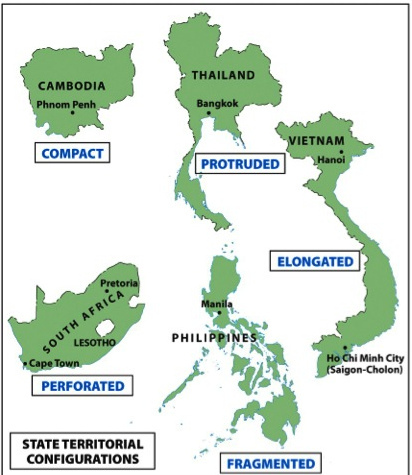Can the shape of a country determine its economics?
Over on his Strange Maps blog, Frank Jacobs takes a look at the shape classification of various countries and compares their economic and political histories.
The Five Types of Territorial Morphology sounds like a fun parlour game, at least in cartophile circles (is Portugal compact or elongated? Is or isn’t Somalia prorupt? Does New Zealand qualify as fragmented?) But there is a serious, geopolitical concern behind this attempt at classification. For a country’s shape has a profound impact on its economic success, and even its political viability.
Fragmented states often experience great centrifugal pressures, with separatism affecting their outlying fragments. This is true of the Philippines, the central government of which only last October concluded a peace deal with the Moro Islamic Liberation Front, which had waged a separatist guerilla on the southern island of Mindanao.






Stay Connected